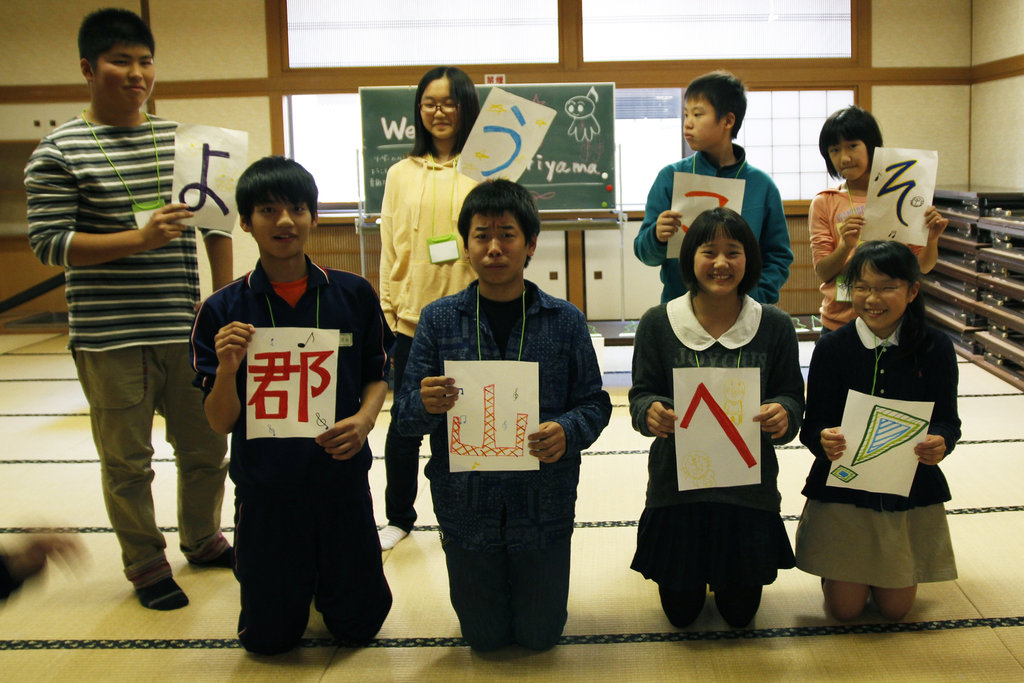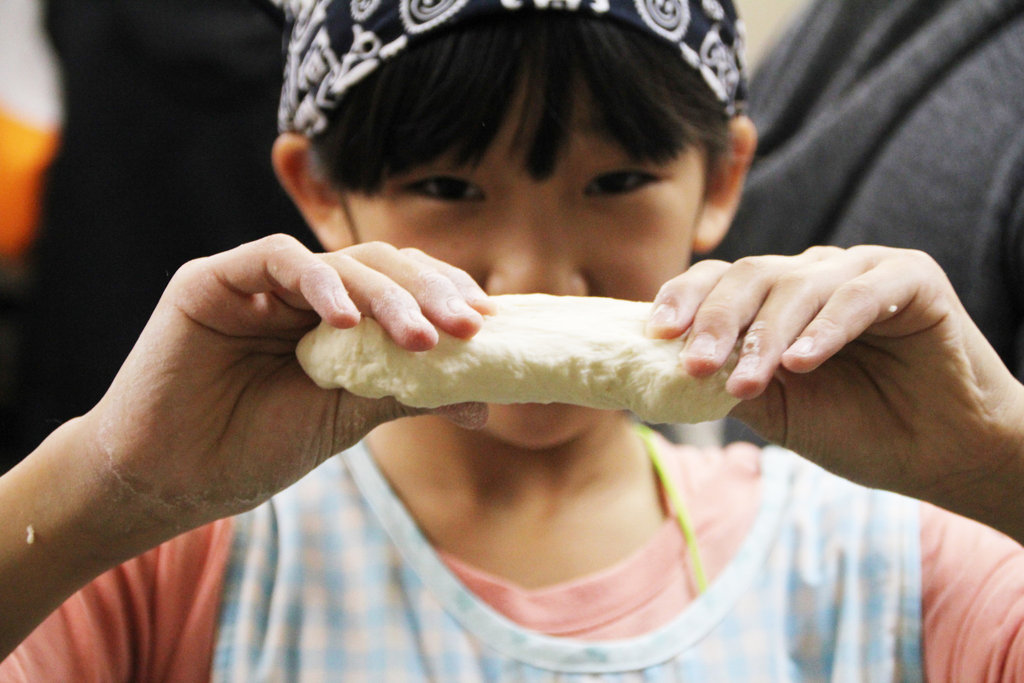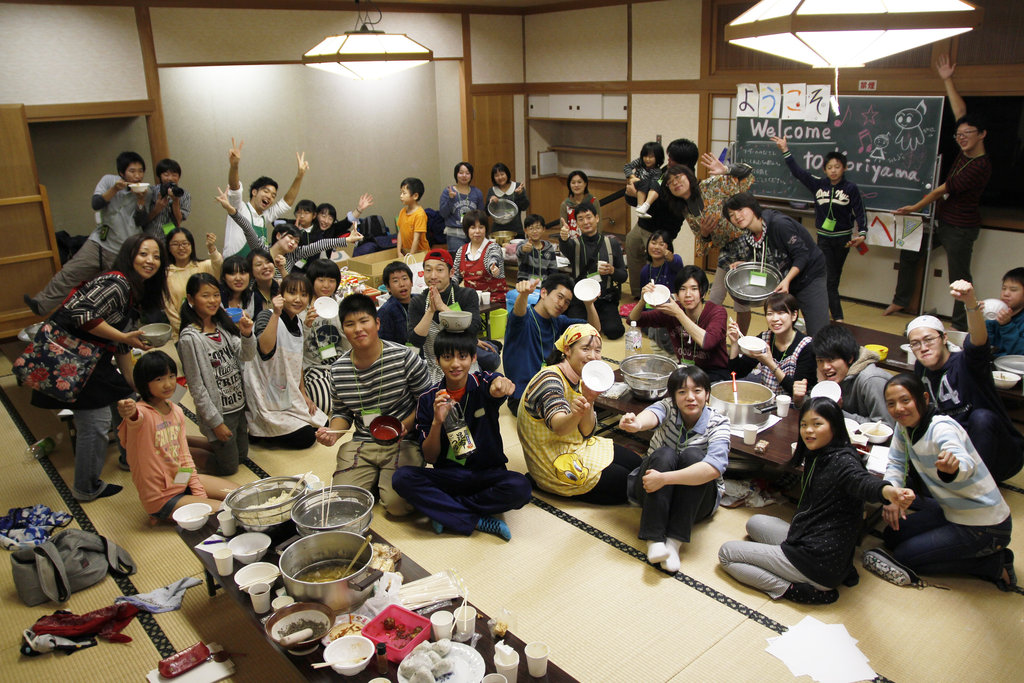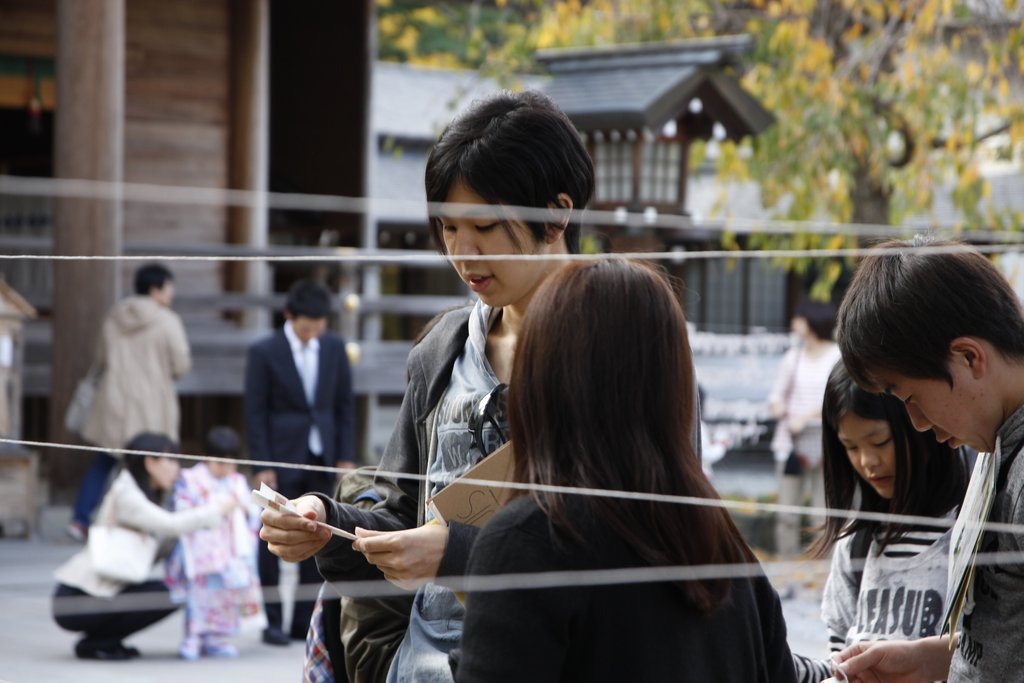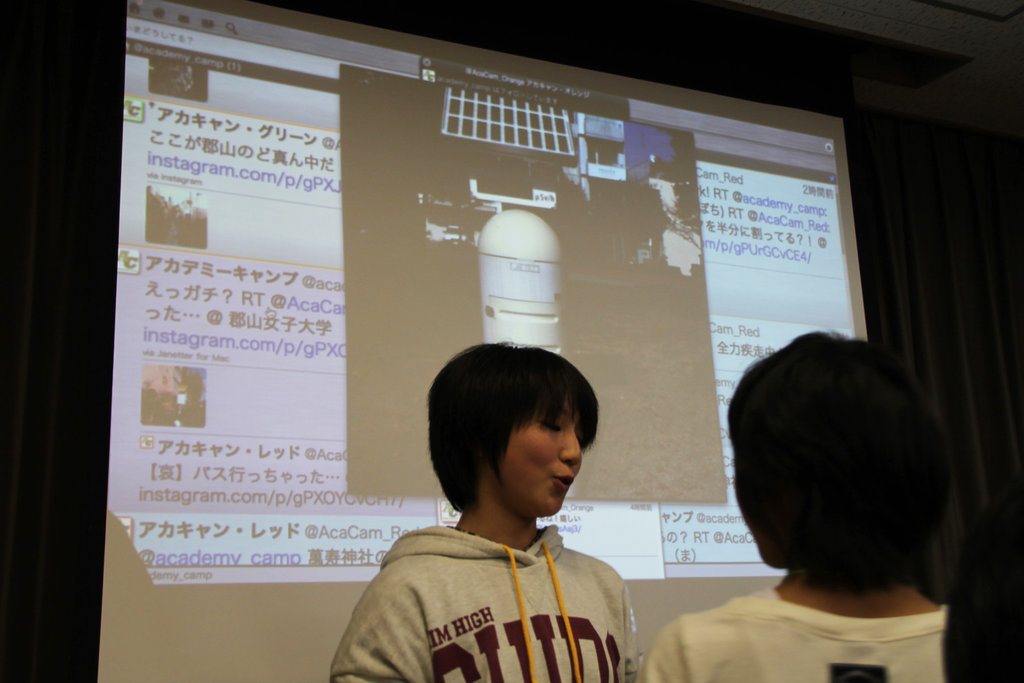By Kenji Saito | Representative Director
Please find a Japanese version of this report here.
On November 2 and 3, 2013, we had a camp in Koriyama City, Fukushima, hosted by some of past participants of our camps and their families. A guest from Taiwan who had wanted to visit Fukushima (a YMCA volunteer who helped us in the Taiwan camp in August) and 14 staff members of Academy Camp, including 9 university students, went there to get welcomed by about 40 people including the children and their families, so that we could "spend wonderful two days" as we found written by the children on the blackboard when we entered the Japanese-style room in Koriyama Regional Job Training Center.
In this camp, our usual roles were reversed for two reasons: 1) we would like the juvenile participants of our camps to be the leaders of the next generation ("next leaders"), and wanted them to experience being on the operating side of a camp, and 2) we would like the parents of the children to participate in our activities. The children led us through the orientation session with self-introduction, ice-breaking and team-building activities, as our staff members would usually do in our camps. Then parents helped the children and us making udon noodle with tofu and vegetable chowder, a Japanese cuisine that differs in every region. The parents brought many kinds of local foods, too.
As a result, the banquet felt like a big family gathering, of which we have been very glad and very grateful.
At the same time, it was an occasion for us to witness part of difficult lives in Fukushima today, as we were told that vegetables and rice used in the cooking were sent from a kind farmer in Ishikawa prefecture to make sure that they were free of extra radioactivity from the ongoing nuclear accident.
On the second day, we conducted "Koriyama Digital Orienteering", an urban adventure using wireless devices, to explore Koriyama City, guided by the children. For many of them, Koriyama is their home town, but it turned out that they made many new discoveries about their old town through visitors' eyes. This was a practice for the children for their next challenge explained below.
At a closing session of the camp, a junior-high school girl expressed her feeling about the radiation monitoring posts installed by the government we saw at parks. By looking at the displayed values on the posts, she often feels safe to play in the parks when the values are relatively low (which are relatively high compared with the rest of Japan). It is part of the unordinary lives that have been made ordinary to the children.
NEXT CHALLENGE FOR THE NEXT LEADERS
This weekend, about 10 junior high and high school students who have participated in our camps before will be invited to a series of sessions in Tokyo to discuss how they can make their home towns in Fukushima more first-rate places to live in by developing smartphone applications. We hope that this "ideathon" will result in real developments involving the children.
Beside the participation fee, we need about 10,000 yen per person to invite. We would really appreciate your continuing support.
Links:
By Kenji Saito | Representative Director
By Kenji Saito | Representative Director
Project reports on GlobalGiving are posted directly to globalgiving.org by Project Leaders as they are completed, generally every 3-4 months. To protect the integrity of these documents, GlobalGiving does not alter them; therefore you may find some language or formatting issues.
If you donate to this project or have donated to this project, you can receive an email when this project posts a report. You can also subscribe for reports without donating.
Support this important cause by creating a personalized fundraising page.
Start a Fundraiser